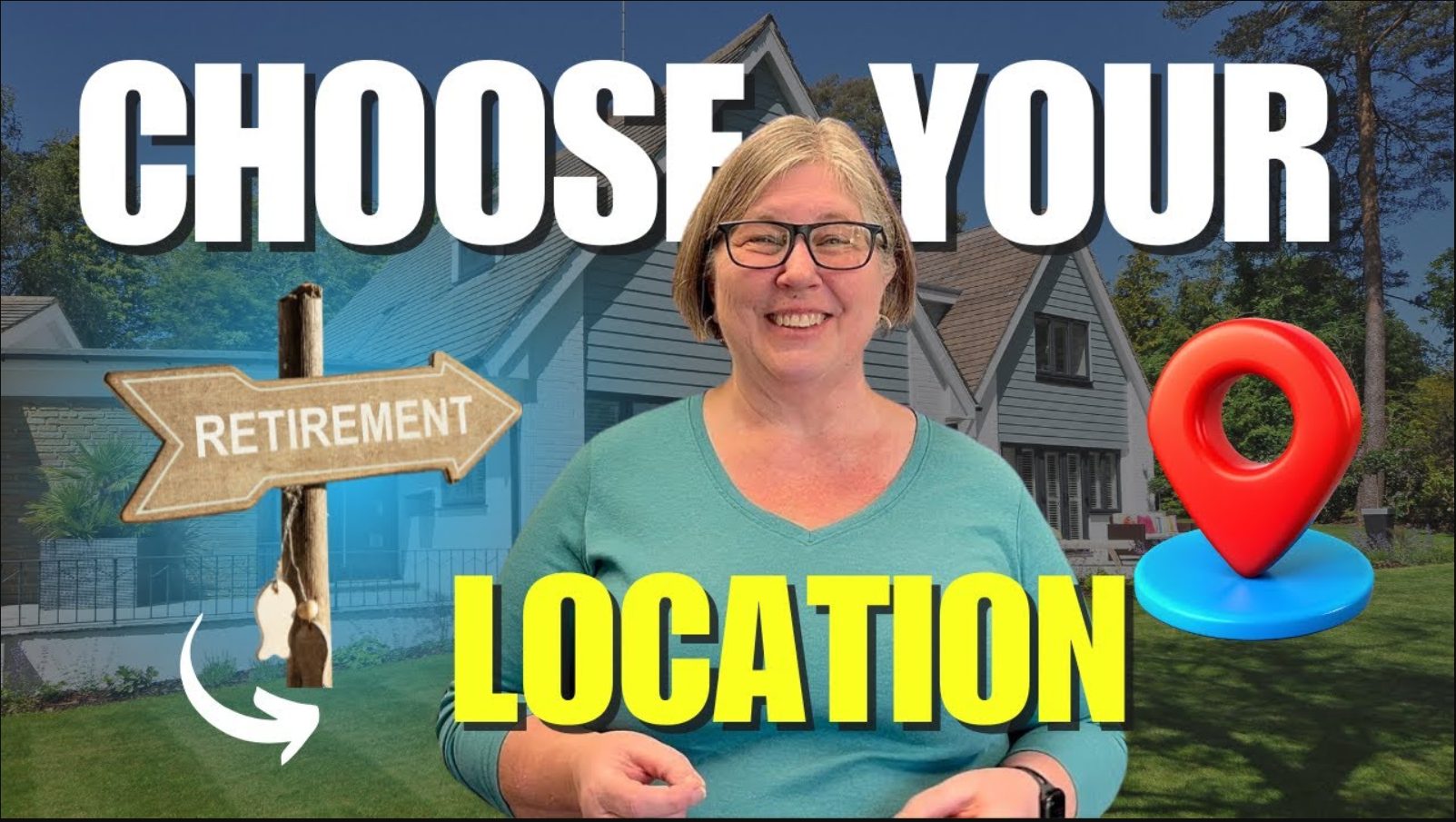How to find the perfect location for your retirement relocation. Are you retired and would really like to move, but are having difficulty pinpointing exactly where to move to? You could take a dart and throw it at a map and just move there, but who says that you’d be happy there or that you’d even like living there? So rather than throwing a dart at a map, continue reading this post for a common-sense approach to finding your new retirement location.
We have thought about how people choose where to move to after they retire. To be honest, we have helped clients and friends with this how-to, but never really thought about it for ourselves. Retirement is not in our near future, but to be honest, the information that we’re sharing in this video today really got us thinking.
Richelle belongs to a closed group on Facebook for women who are, let’s say, older. She’s a frequent flyer in the group and not an active participant, she observes—not stalking, Richelle just observe. Little did she expect that she would gain such great insight into how people select a location to move to after retirement if the move has nothing to do with moving to be close to their children and/or grandchildren. There were over 100 responses to the post, and Richelle started reading them. The very first one was, “I moved to a place I vacationed for years and loved.” Many retirees look for fun things to do, fine dining, shopping, a university, theater, entertainment, good weather, and a fantastic governor. And she was hooked.
Richelle read many of the responses, and although people had used different routes to get to where they finally ended up, Richelle noticed four themes in many of the responses. Number one was healthcare—quality healthcare for seniors. Number two, taxes—low to no state income tax, no taxes on retirement income, lower property taxes. Number three, weather—climate. People who live in the colder sections of this country don’t want to shovel snow when they’re older. And number four, affordability—we think we all know what that one is.
So how do people hone in on exactly where to move to? Many of the posters made up lists that included the items that were important to them for their new location to have. Those items were in addition to the four themes that have already been mentioned, and they included things like proximity to friends and family—some wanted to move closer, and some wanted to move further away. Proximity to higher education—colleges, universities. Number three, proximity to a city—some people wanted to be out in the sticks, and others wanted to move right into the belly of the beast. Number four, activities—things like walking, jogging, swimming, biking, etc. Number five, no steps. Number six, a smaller house than the one they already lived in. Number seven, good to great restaurants—no bad food. Number eight, access to airports for traveling.
Once people had their list together, Richelle saw two approaches on what they did next. One was old school, and the other was techie. Old school was they went to the local library, spoke to the librarian, and did all of their research manually. Techie was they went to a Google search, typed in all the information that was on their list, and then looked at the different locations that came up and met that criteria. Next, they started to visit the locations that they thought they might be interested in living in. Some people rented VRBO, some went Airbnb, and the purpose was to immerse themselves into the communities that they were interested in moving to and get to know what was going on there.
By staying in a VRBO or an Airbnb, they were able to go to the grocery store, go to the liquor store, go to the movie theater, go to community events, and while they were out and about in the public, they spoke to the local residents. They asked questions about where things were, how do you do this, and how do you like living here. Some people ruled out towns, and it took them four years to find the ideal place, and for some people, it was love at first sight, and they just moved. They tried out the towns before buying a home with each of the longer stays in the towns that they were honing in on. This was a sensible and practical approach to drill down on exactly where to move to.
And yes, one poster did mention that she had a friend who threw a dart at a map and just picked up and moved. That poster went to visit her friend in their new location, and she loved it so much she moved there too. As a side note, Richelle learned something else. Rather than just selecting a location to move to after retirement, she learned a new acronym: CFBC—childfree by choice. We guess this is what a DINK (dual income, no kids) grows up to be.
We hope you found this information to be helpful. If you have questions, or if you’d like to start your journey to your retirement home, feel free to reach out to us.

 Facebook
Facebook
 X
X
 Pinterest
Pinterest
 Copy Link
Copy Link
